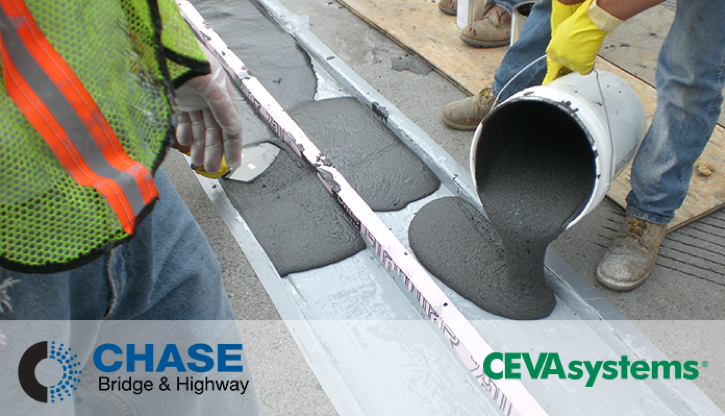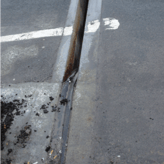When using concrete as a building material, there are some very important things to consider. As...
The Importance of Expansion Joints on Concrete Bridge Decks

Expansion joints are vital to the life of a bridge itself and must be correctly installed and maintained in order to function properly. The two major causes of joint failure are improper installation and insufficient maintenance of the joint. Oftentimes, when dirt, dust or other types of debris build-up in and around these joints (caused by traffic and environmental conditions), the joints lose their ability to expand and contract with the structure, rendering them less effective. When this happens, the reduced flexibility will result in cracking or distortion/crushing of the joint material, compromising the entire bridge’s structural integrity.
Bridge Deck Expansion Joints MUST:
- protect concrete edges from damage caused by vehicle traffic,
- act as a seal to prevent foreign objects/debris from entering the joint opening.
- allow for expansion and contraction caused by thermal cycles, and
- allow for the natural creep and shrinkage of concrete.
Important Elements to Consider
When using concrete as a building material, there are some very important things to consider. Of course, the strength and weight load of the concrete are important, but another vital component is the
 The heating and cooling cycles of concrete bridge decks will cause expansion and contraction, respectively. If the contraction is greater than the tensile strength of the construction materials, cracking will occur. And inversely, when the expansion is restricted, distortion or crushing of the materials can occur. To prevent these types of failures, concrete bridge decks require joints fitted with materials that allow the structure to expand and contract without causing damage to the structural integrity. These are known as expansion joints, and there are many different types.
The heating and cooling cycles of concrete bridge decks will cause expansion and contraction, respectively. If the contraction is greater than the tensile strength of the construction materials, cracking will occur. And inversely, when the expansion is restricted, distortion or crushing of the materials can occur. To prevent these types of failures, concrete bridge decks require joints fitted with materials that allow the structure to expand and contract without causing damage to the structural integrity. These are known as expansion joints, and there are many different types.
Left Image -Failed Expansion Joint - Undersized
The 2 Types of Expansion Joints
Open joints – allow water and debris to move freely through the joint but are often subject to debris buildup, which can render them ineffective. These types of joints include:
o butt joints
o sliding plane joints
o finger joints
Closed joints - prevent debris and water from penetrating but must be designed specifically for the size and movement properties of the intended joint. These include the following types of joints:
o poured joints
o asphalt plug joints
o compression seals
o strip seals
o reinforced elastomeric joints
o modular elastomeric joints
Each of these joint types has a specific application method and set of parameters which must be followed to ensure the joint’s effectiveness. Proper sizing of the joint, along with an accurate assessment of the anticipated movement of the structure, must be considered when selecting the proper joint type for the intended project. Some other things to consider are substrate preparation, climatic factors, lane closure requirements, manufacturer requirements, physical properties and limitations of the joint material.
Many of the roads and bridges in the US have expansion joints which are structurally deficient. The main causes of failure range from tearing, separation of the seal from the substrate, snowplow damage, concrete deterioration, debris accumulation and improper alignment of deck sections. The majority of these failures can be attributed to improper installation or inadequate maintenance practices.
Chase construction products include a line of closed cell foam expansion joints as well as an elastomeric concrete used as the headers of joints to withstand traffic The CEVA expansion joint line of products is a custom fabricated series of expansion joint products and accessories used in a variety of applications. Please contact us for additional information. It can be tricky to measure expansion joints, read our guide!
Also read Concrete Bridge Deck Joints: State of the Practice* by Virginia Center for Transportation Innovation & Research
*Source: Virginia Center for Transportation Innovation & Research






